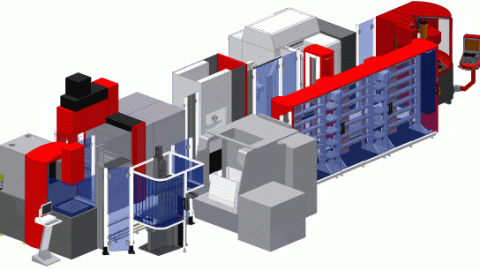
A typical flexible production system
Flexible Manufacturing (Flexible Manufacturing) is a production method designed to easily adapt to changes in design, model and quantity of products right in the manufacturing process. Applying flexible manufacturing can help businesses significantly improve their ability to fulfill orders, while also offering design adjustment options to limit repetitive errors on a large scale.
Flexible manufacturing is only possible when a number of devices and machines are integrated and operated consistently by a system. This system is called the Flexible Manufacturing System (FMS). FMS affects a product from many different approaches, but it can be classified into two main categories:
– Device-oriented approach: Includes the ability to use multiple machines to perform the same activity on a product, as well as the ability of the system to adapt to large-scale changes, such as block size. amount, power, or operability.
– Routing approach: Includes the ability to change the system to create new types of products and the ability to change the order of activities performed on a product.
Principle of flexible production system formation
The process of setting up a flexible production system begins with determining which products (or parts) need to be manufactured. This will determine the number of machines and equipment that need to be integrated with FMS. Next is to establish the functional structure, technology structure and information structure of FMS, and establish links in the local computer network. After the completion of this phase, the operator can solve the problem of algorithms and programming taking into account the interaction between the FMS control system and other automated systems in the fully integrated system.
In addition, the operator also needs to set the amount of supply for the systems of electricity, water, compressed air, data, etc to form a unity across the system. The standardization of the FMS must be taken into account from the outset and must be based on the widespread use of the module principle: for example, it is possible to select standard models of automatic storage, mechanical samples, automatic transport components, standard technology equipment and robots, etc.
Most FMSs consist of three main systems: the transport system and the central control system; Material handling system to optimize the production process; and finally an enforcement system, including equipment and machinery directly involved in the production process. Take for example at Japanese firm JUSOKI:
– The central control department plays a role of coordinating production activities.
– Material supply and handling system: Including automatic storage and conveyors to supply raw materials and workpieces for universal machines.
– Execution system: Consists of three CNC machines and seven common universal machines (lathes, drilling machines and boring machines)
Thanks to the close connection between these 3 systems, the production process can be operated flexibly and always ready to meet the needs of changes in design, volume or capacity.
(to be continued)
Productivity and Quality Office